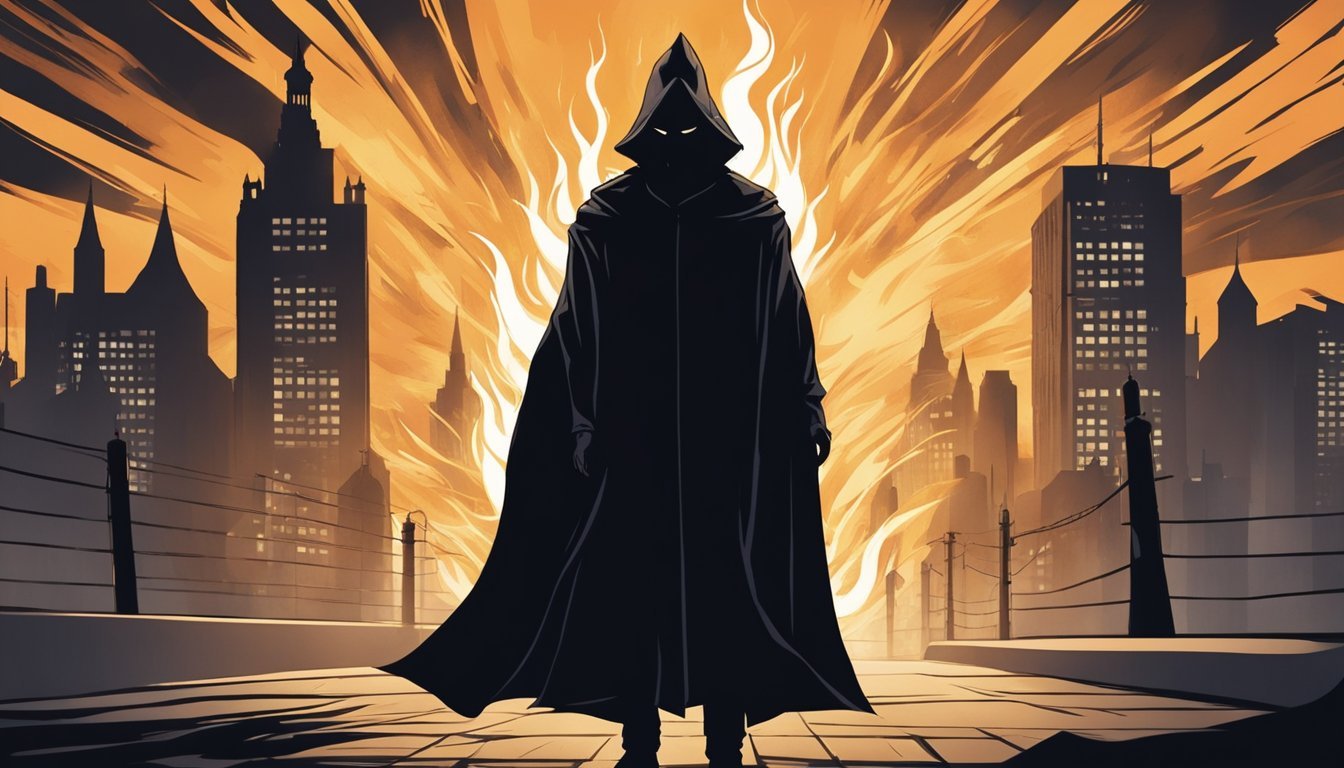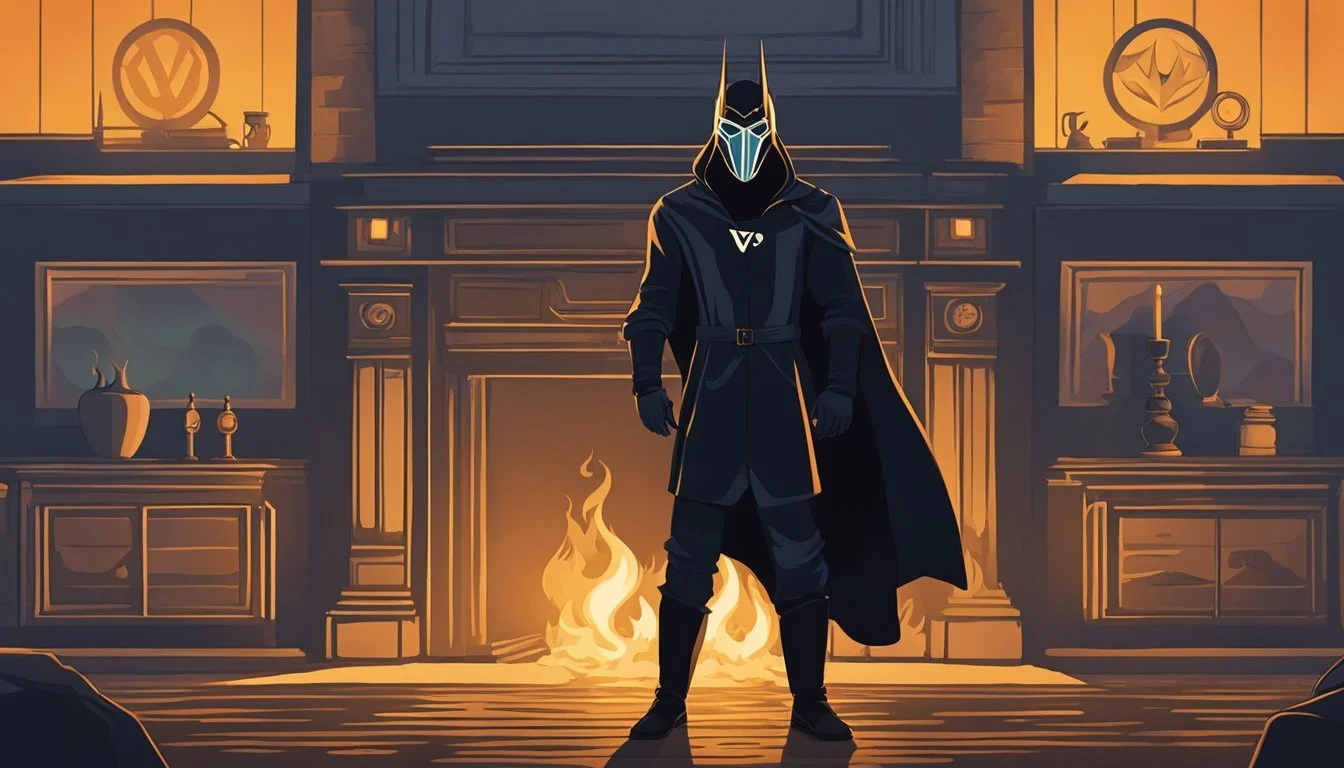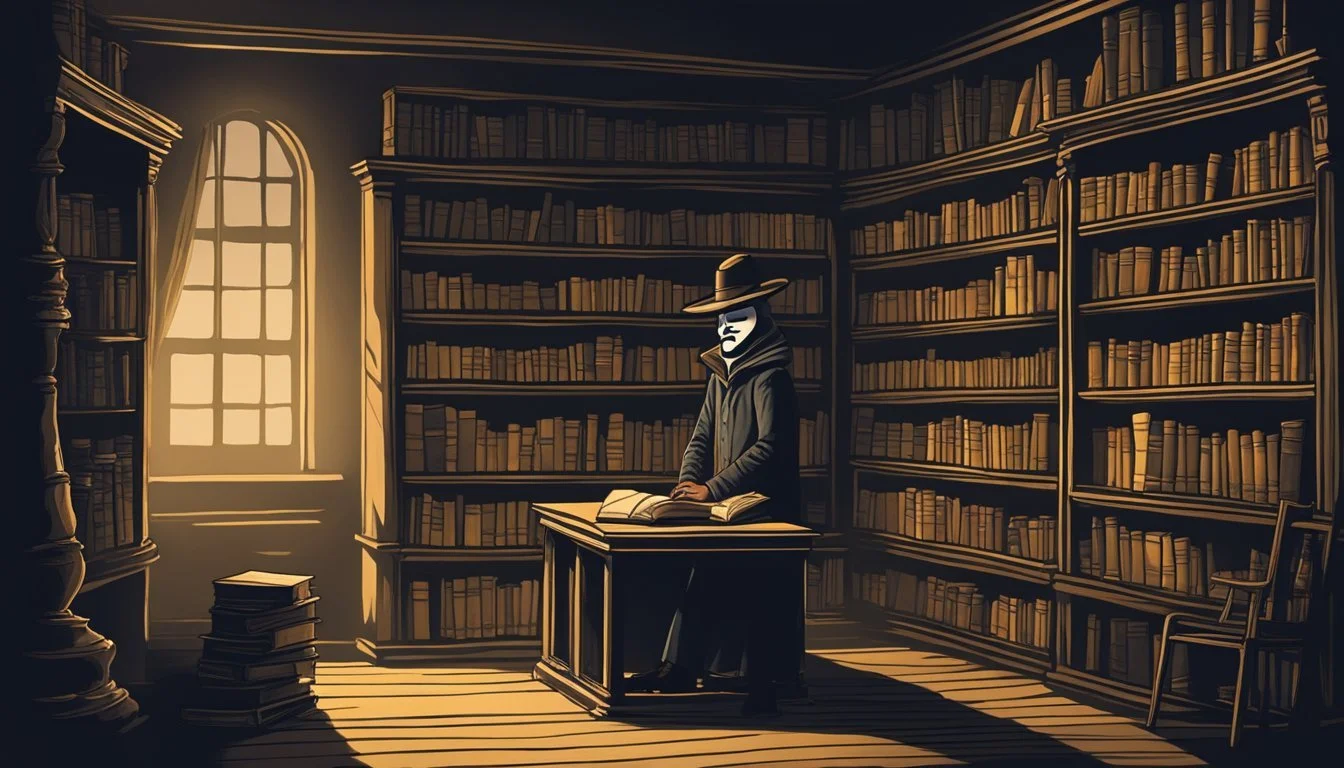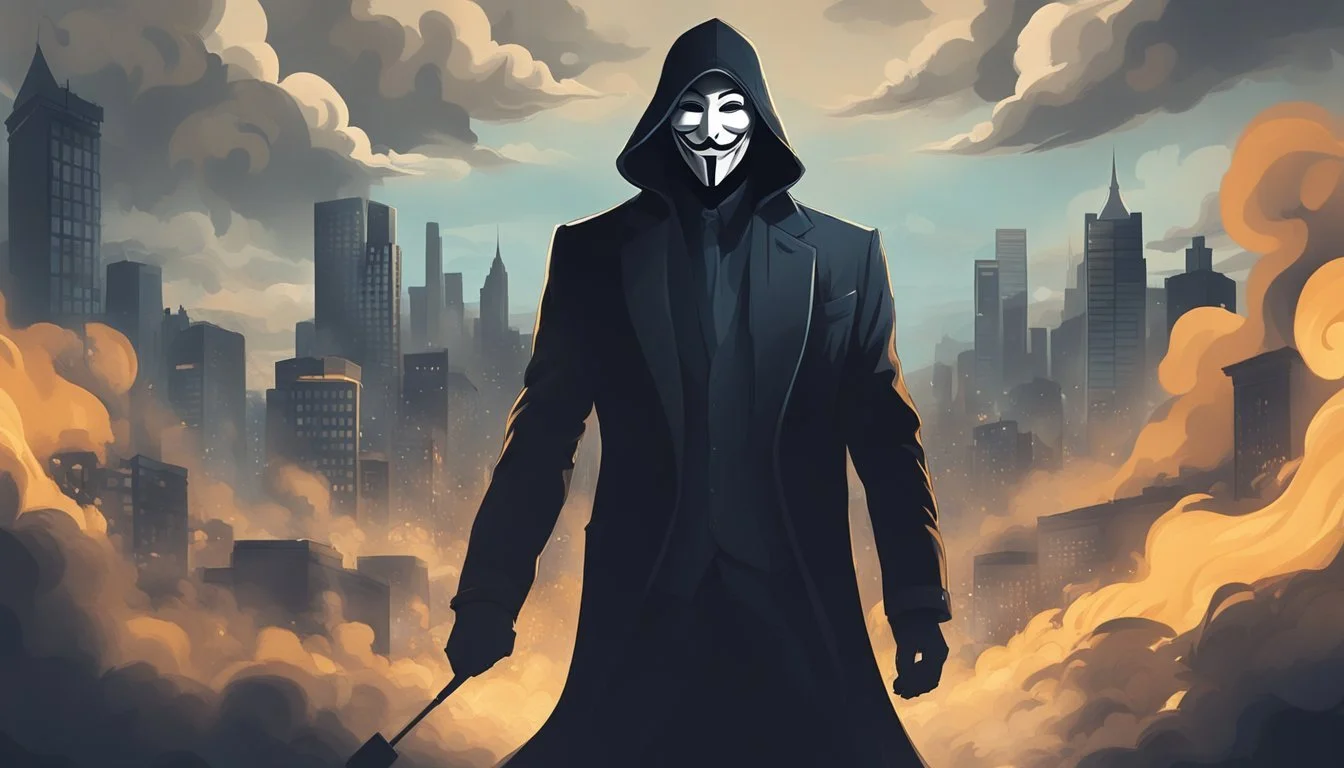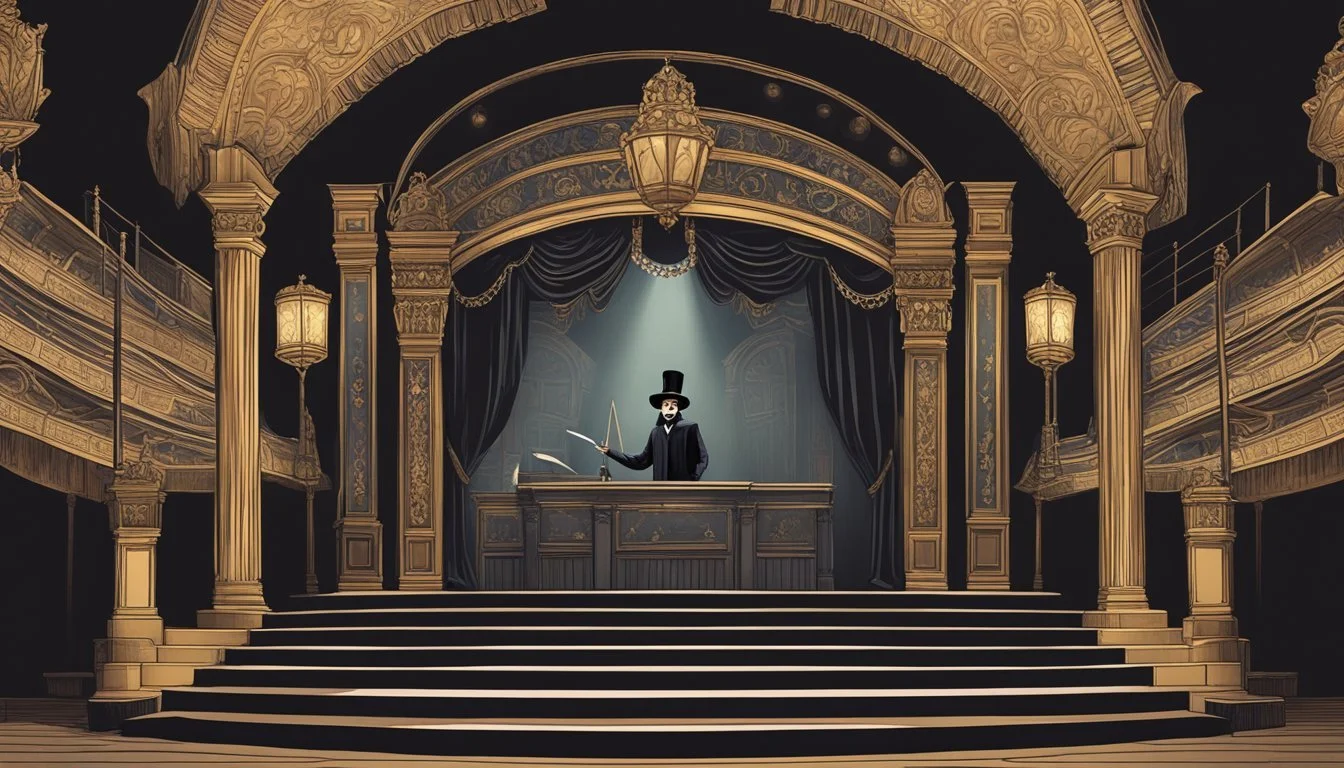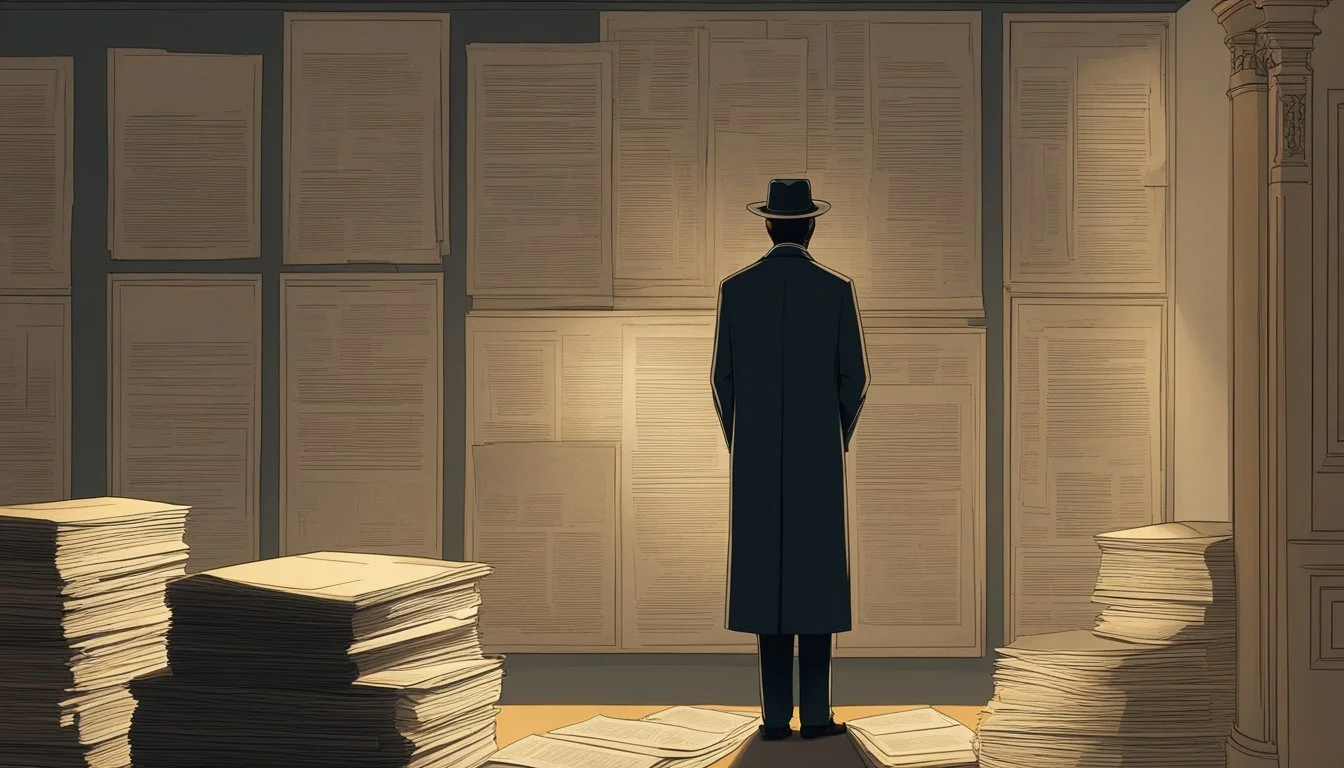Unmasking V: The Historical Inspiration Behind the Iconic Graphic Novel
"V for Vendetta" draws inspiration from a pivotal moment in British history - the Gunpowder Plot of 1605. This failed assassination attempt against King James I on November 5th has left an indelible mark on British culture and politics. The iconic Guy Fawkes mask worn by V in the film has become a powerful symbol of resistance against oppressive governments worldwide.
The story reimagines this historical event in a dystopian future, using it as a backdrop for exploring themes of freedom, identity, and the power of ideas. V's crusade against a totalitarian regime echoes the motivations behind the original Gunpowder Plot, albeit with a more complex moral framework.
By drawing parallels between past and future, "V for Vendetta" invites viewers to consider the cyclical nature of political struggle and the enduring human desire for liberty. The film's portrayal of V as both hero and antihero challenges audiences to grapple with difficult questions about the ethics of revolution and the true meaning of justice.
Origins of 'V for Vendetta'
'V for Vendetta' emerged from the creative minds of Alan Moore and David Lloyd in the early 1980s. The graphic novel draws inspiration from historical events and the political landscape of its time.
Creation of the Graphic Novel
Alan Moore and David Lloyd collaborated on 'V for Vendetta' for the British comics anthology Warrior. The series began in 1982 but was left unfinished when Warrior ceased publication in 1985. DC Comics later picked up the title, allowing Moore and Lloyd to complete their dystopian narrative.
Moore expanded on Lloyd's initial concept, developing a complex story set in a fascist version of Britain. The writer incorporated themes of anarchy, individual freedom, and resistance against totalitarian regimes.
Lloyd's distinctive visual style, featuring stark black and white illustrations, contributed significantly to the comic's atmosphere. His design for V's iconic Guy Fawkes mask became a symbol that transcended the original work.
Influence of Guy Fawkes
Guy Fawkes, the historical figure, played a crucial role in shaping 'V for Vendetta'. Fawkes was part of the Gunpowder Plot of 1605, an attempt to blow up the House of Lords and assassinate King James I.
Moore and Lloyd used Fawkes' image and story as a foundation for their protagonist, V. The character adopts Fawkes' mask and continues his legacy of rebellion against tyrannical rule.
In British culture, November 5th is celebrated as Guy Fawkes Night with bonfires and fireworks. This tradition found its way into the graphic novel, with V planning his actions around this date.
Political Climate of the 1980s
The political landscape of 1980s Britain heavily influenced 'V for Vendetta'. Margaret Thatcher's conservative government and its policies provided a backdrop for the story's themes.
Moore envisioned a future where far-right ideologies had taken hold, reflecting fears of authoritarianism and the erosion of civil liberties. The graphic novel explored concepts of surveillance, censorship, and state control.
The Cold War's persistent threat of nuclear conflict also shaped the narrative. Moore incorporated this anxiety into his dystopian vision, imagining a post-nuclear Britain under fascist rule.
'V for Vendetta' served as a critique of Thatcherism and a warning about the potential consequences of unchecked political extremism. Its themes resonated with readers facing similar concerns in their own societies.
Historical Context
The historical events surrounding Guy Fawkes and the Gunpowder Plot of 1605 serve as the foundation for V's character and mission in "V for Vendetta". This failed assassination attempt against King James I became a defining moment in English history.
The Gunpowder Plot of 1605
The Gunpowder Plot was a failed attempt to blow up the House of Lords in London on November 5, 1605. A group of English Catholics, led by Robert Catesby, planned to assassinate King James I and restore a Catholic monarch to the throne.
The conspirators leased a cellar beneath the House of Lords and filled it with 36 barrels of gunpowder. Guy Fawkes, an experienced soldier, was tasked with guarding the explosives and lighting the fuse.
On the evening of November 4, authorities searched the cellars and discovered Fawkes with the gunpowder. The plot was foiled, and the conspirators were arrested, tried, and executed for treason.
Guy Fawkes' Motivations and Objectives
Guy Fawkes, born in 1570 in York, was raised as a Protestant but converted to Catholicism in his youth. He became disillusioned with the persecution of Catholics in England under Protestant rule.
Fawkes joined the Spanish army and fought in the Netherlands, gaining expertise in explosives. His military experience made him valuable to the Gunpowder Plot conspirators.
His primary objective was to end the persecution of Catholics and restore a Catholic monarch to the English throne. Fawkes believed that violent action was necessary to achieve religious freedom and political change.
The failure of the plot led to increased restrictions on Catholics in England. However, Guy Fawkes became an enduring symbol of resistance against tyranny, inspiring works like "V for Vendetta".
V: The Character
V embodies rebellion against tyranny through his iconic mask, revolutionary ideology, and parallels to historical figures. His character serves as a complex symbol of resistance in the dystopian world of "V for Vendetta."
Symbolism of the Guy Fawkes Mask
V's Guy Fawkes mask is central to his identity and message. The mask references the 1605 Gunpowder Plot, connecting V's actions to historical rebellion against oppression.
It allows V to become an idea rather than just an individual. The mask's grinning visage presents an unchanging face to the world, hiding V's true identity and emotions.
By adopting this symbol, V taps into cultural memory and gives his revolution a recognizable icon. The mask transforms from a symbol of a failed plot to one of successful resistance against tyranny.
V's Ideology and Philosophy
V's core philosophy centers on personal freedom and opposition to authoritarian control. He believes ideas are more powerful than physical force, famously stating "ideas are bulletproof."
His methods are extreme, using violence and manipulation to achieve his goals. V sees destruction as a necessary step toward societal rebirth and views chaos as a catalyst for change.
He champions anarchism, seeking to dismantle governmental power structures entirely. V's ideology blends revolutionary zeal with a theatrical flair, using grand gestures and quotations to convey his message.
Comparing V to Historical Revolutionaries
V shares traits with various historical revolutionaries. Like Che Guevara, he uses guerrilla tactics against a powerful regime. His use of explosives and targeting of government buildings echoes anarchists like Ravachol.
V's eloquence and focus on ideas recall Thomas Paine, while his theatrical nature evokes Abbie Hoffman. His vendetta against specific individuals responsible for his suffering parallels Alexandre Dumas' Count of Monte Cristo.
Unlike many revolutionaries, V remains an enigma, with his true identity and backstory largely unknown. This mystery enhances his symbolic power as a revolutionary figure.
Cultural Impact
The graphic novel "V for Vendetta" has left an indelible mark on popular culture, inspiring a successful film adaptation and becoming a symbol of resistance movements worldwide. Its influence extends far beyond its original medium.
Adaptation to Film
The 2005 film adaptation of "V for Vendetta" brought the story to a wider audience. Directed by James McTeigue and starring Hugo Weaving as V and Natalie Portman as Evey, the movie captured the essence of the graphic novel while making it accessible to mainstream viewers. The film's visual style and themes resonated with audiences, contributing to its commercial success and critical acclaim.
The movie's release coincided with growing concerns about government overreach and surveillance, giving it added relevance. It explored complex political and social issues, prompting viewers to question authority and consider the balance between security and freedom.
Use of the Guy Fawkes Mask in Modern Protests
The Guy Fawkes mask worn by V has become an iconic symbol of protest and resistance. Originally designed by illustrator David Lloyd for the graphic novel, the mask has been adopted by various activist groups and movements worldwide.
The mask gained particular prominence with the hacktivist group Anonymous, who used it as their symbol. It has appeared at protests against government corruption, economic inequality, and censorship in countries ranging from the United States to Hong Kong.
Some governments have even banned the mask at public gatherings, demonstrating its perceived power as a symbol of dissent. The mask's popularity has led to mass production, ironically turning an anti-capitalist symbol into a profitable merchandise item.
Legacy in Popular Culture
"V for Vendetta" has left a lasting impact on popular culture beyond its political symbolism. The character of V and his iconic mask have been referenced and parodied in numerous TV shows, movies, and video games.
The story's themes of individual freedom versus authoritarian control continue to resonate with creators and audiences alike. It has inspired other works of dystopian fiction and political thrillers, influencing both literature and film.
The phrase "Remember, remember, the fifth of November" from the story has entered popular lexicon, often used in contexts far removed from its original meaning. The graphic novel's exploration of anarchism and personal identity has also sparked ongoing philosophical and political discussions.
The Graphic Novel and Film Compared
The graphic novel and film adaptation of "V for Vendetta" offer distinct interpretations of the core narrative, with notable differences in themes, visual style, and audience reception.
Differences in Themes and Messages
The graphic novel delves deeper into political ideology and anarchism. It presents a more nuanced exploration of totalitarianism and individual freedom. The film, while retaining the anti-authoritarian message, simplifies some complexities.
Visual styles differ significantly. The graphic novel uses stark black and white illustrations, creating a gritty atmosphere. In contrast, the film employs a broader color palette and cinematic techniques to enhance visual appeal.
Character development varies between versions. The graphic novel provides more backstory for V and Evey, allowing for greater character depth. The film condenses their arcs, focusing on key moments to drive the plot forward.
Audience Reception and Critical Response
The graphic novel, released in the 1980s, initially gained a cult following. Critics praised its intricate storytelling and political commentary. It became influential in comic book circles, inspiring discussions on government power and individual rights.
The film adaptation, released in 2005, reached a wider audience. It received mixed reviews from critics. Some applauded its visual style and performances, while others felt it oversimplified the source material's themes.
Fans of the graphic novel had varied reactions to the film. Many appreciated the broader exposure of the story, while others felt it lacked the original's depth. The film's iconic Guy Fawkes mask became a symbol for real-world protest movements, extending its cultural impact beyond entertainment.
Theater and Nuanced Storytelling
"V for Vendetta" draws heavily from theatrical traditions to craft a complex narrative filled with symbolism and layered characters. The story employs dramatic techniques to explore themes of resistance and identity.
Use of Allegory and Symbolism
The Guy Fawkes mask serves as a potent symbol throughout "V for Vendetta." It represents anonymity, rebellion, and the idea that symbols can outlive their creators. The mask becomes a unifying icon for the resistance movement.
V's hidden underground lair, the Shadow Gallery, acts as an allegory for preserved culture and forgotten history. Filled with banned artworks and literature, it symbolizes the power of ideas to survive oppression.
The domino scene visually represents the spread of revolutionary ideas. As V topples a line of dominoes shaped like his signature "V," it foreshadows the cascading effect of his actions on the totalitarian regime.
Narrative Technique and Character Development
The story employs parallel narratives to develop its characters. V's mysterious past unfolds alongside Evey's transformation, creating a thematic resonance between mentor and protégé.
Character arcs are carefully crafted to show gradual change. Evey's journey from fearful bystander to empowered revolutionary mirrors the larger societal shift depicted in the story.
Flashbacks and monologues reveal backstories incrementally. This technique builds suspense while allowing for nuanced exploration of characters' motivations and moral complexities.
The use of Shakespeare quotes and literary allusions adds depth to V's character. It showcases his erudition and frames his actions within a broader historical and cultural context.
Reflections on Authoritarianism
"V for Vendetta" offers a stark portrayal of authoritarian rule, drawing parallels to real-world regimes and serving as a cautionary tale for future societies. The film's depiction of totalitarian control resonates with historical examples and contemporary concerns.
Parallels to Real-World Governments
The Norsefire regime in "V for Vendetta" bears resemblances to various authoritarian governments throughout history. Its use of propaganda, surveillance, and censorship echoes tactics employed by Nazi Germany and Stalinist Russia.
The film's portrayal of state-controlled media mirrors practices in North Korea and other closed societies. Norsefire's "Finger" secret police evoke memories of the East German Stasi or the Soviet KGB.
The government's exploitation of fear to maintain power reflects strategies used by numerous authoritarian regimes. This tactic often involves creating external threats or scapegoats to justify increased control over the population.
Future Relevance and Warnings
"V for Vendetta" serves as a warning about the potential erosion of civil liberties in times of crisis. The film's depiction of a society that trades freedom for security remains relevant in today's political climate.
The rise of surveillance technology and data collection raises concerns about privacy and government overreach. The movie's portrayal of constant monitoring foreshadows debates about digital privacy and state surveillance.
"V for Vendetta" also highlights the danger of allowing a single ideology to dominate society. It warns against the suppression of diverse viewpoints and the dangers of unchecked power.
The film's emphasis on individual resistance and the power of ideas continues to inspire activism and political engagement. It underscores the importance of maintaining a vigilant and informed citizenry to prevent authoritarian drift.

